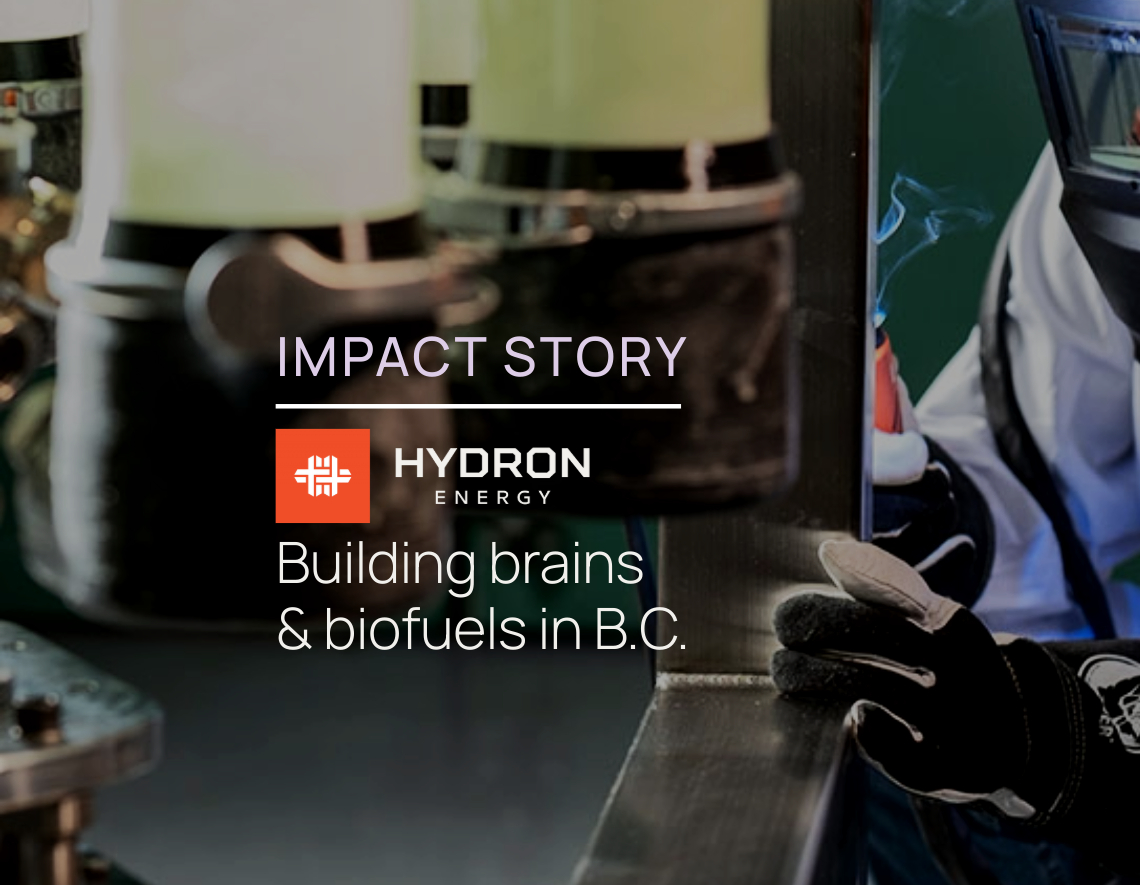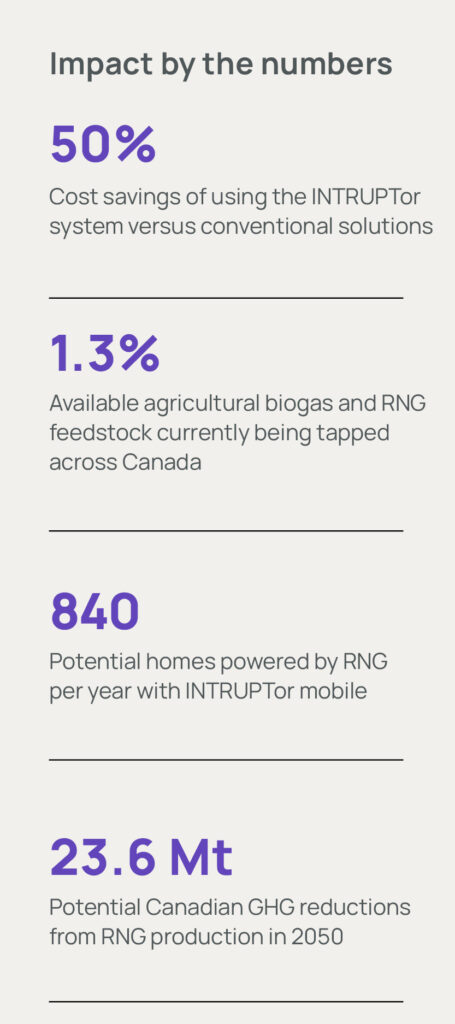

What happens when catalytic cleantech receives catalytic support? For the answer, look no further than the spate of partnerships, investments, and patents emerging from Hydron Energy’s collaboration with the B.C. Centre for Innovation and Clean Energy (CICE).
Soon after its founding in 2020, North Vancouver-based Hydron began work on a scalable system that converts methane-and carbon dioxide-rich biogas from a wide range of waste sources — livestock farms, water treatment plants, and landfills, to name a few — into carbon-neutral fuels such as renewable natural gas (RNG). Based on the same kind of catalytic chemical reactions that remove carbon dioxide from our bodies as we exhale, Hydron’s pilot-scale Intensified Regenerative Upgrading Platform Technology (INTRUPTor) system was designed, built, and operated in a laboratory environment in 2022 through the BC Fast Pilot program, which is delivered by Innovate BC and the National Research Council of Canada Industrial Research Assistance Program (NRC IRAP).
From patents to pilot to going mobile
Unlike conventional (and capital-intensive) gas separation methods, the INTRUPTor system operates at near-ambient pressures and temperatures. Using patented (and much less costly) chemistry and hardware, it yields RNG flow rates that can scale from 25 to 2,370 standard cubic feet per minute (SCFM). Over the course of a year, this would satisfy the annual natural gas needs of between 150 and 1,500 average-sized homes.
“When our pilot testing proved that INTRUPTor costs up to 50 percent less to operate than conventional systems, we realized that a mobile version could make RNG upgrading accessible to smaller-scale agricultural sites that lack the capital resources and pipeline connections of larger sites,” recalls Hydron President and CEO Soheil Khiavi, a serial entrepreneur and inventor who has spent more than two decades developing, patenting, and commercializing gas separation processes and systems as the co-founder of Burnaby-based Svante (formerly Inventys), as an engineering lead at QuestAir Technologies, and as Director of Tech Development at Xebec Adsorption.

Having identified the potential of this nascent smaller-scale RNG market, Hydron’s next step was to field test a mobile INTRUPTor system with the support of a $345,250 investment from CICE. “The results of our pilot were met with some skepticism because they seemed too good to be true,” Khiavi says. “That’s why it was so important for us to validate them in the field, and show how our turnkey mobile system can travel to a biogas facility, collect the RNG, and offload it onto a truck for transportation to a pipeline injection site. You can’t disrupt an industry without proving that your innovation can be commercialized at scale.”
‘Focused on growing our IP’ in B.C.
The validation provided by Hydron’s CICE-supported field testing is attracting partners and investors that are bullish about a market with growth potential to spare. Indeed, it is estimated that Canada is currently tapping as little as 1.3 percent of its available agricultural biogas and RNG feedstock.
Some suitors have been rebuffed, Khiavi says. “I get a lot of offers from companies that want to build us a manufacturing plant overseas, but I don’t feel comfortable doing this because there’s no jurisdiction in some of these countries and you can lose your intellectual property very easily. We have received some tremendous support here in B.C., so we are focused on growing our IP here and developing top talent and manufacturing capabilities in North America.”
The latter is the focus of Hydron’s recent partnerships with the Modern Niagara Group affiliate OX2 Manufacturing Solutions and US-based BCM Industries, both of which are supporting the ramping up of Hydron’s North Vancouver manufacturing facility. Hydron has also gone on to receive grants from the Clean Resource Innovation Network (CRIN) and the NGIF Accelerator’s Industry Grants program, with both being used to accelerate commercialization of the mobile INTRUPTor system and scale up manufacturing “by orders of magnitude,” Khiavi says.
Methane gains slash GHG emissions
By capturing and purifying methane emissions from animal agriculture, which account for 29 percent of all such emissions in Canada, the INTRUPTor system helps eliminate a gas that is responsible for about 13 percent of all of the country’s GHG emissions. The resulting RNG then displaces fossil fuel-based energy in heating, transportation systems, and industrial processes, resulting in total GHG reductions of an estimated 8.2 megatonnes (Mt) in 2020 and potential annual reductions of 23.6 Mt by 2050.
